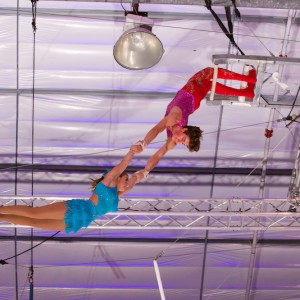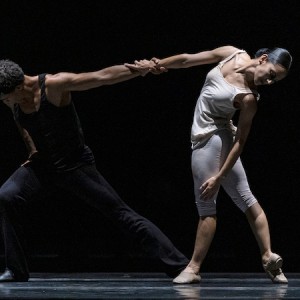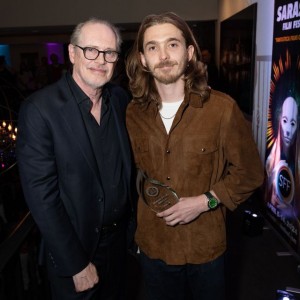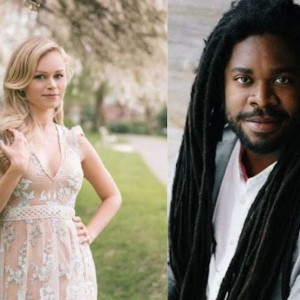From the moment humans discovered the rhythm hidden deep in their bones, dancing has played an important role in human development. Communicative, religious, cathartic or even just fun, dance has been a unifier and a common element across virtually every culture. Like music, it’s just something that we can’t help but do. Four dance professionals, representing both the classic and the modern styles, came together at SRQ to discuss the shared future of dance in Sarasota.
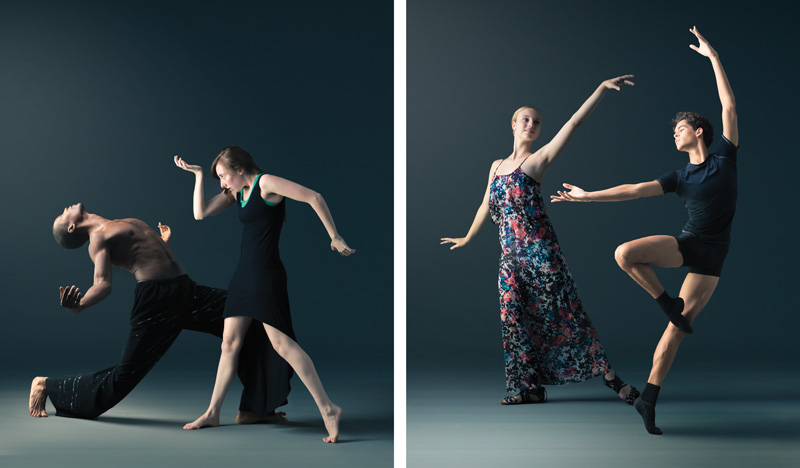
What is the state of dance here?
Ariel Serrano, director and founder, Sarasota Cuban Ballet School: We're in a very good place. We all bring a different perspective and that’s necessary to provide a richer experience to the audience. But most important is our dedication to the fundamentals and nurturing the highest quality of talent. Sarasota is definitely making its mark in the world of dance and our individual and collective efforts are making a difference.
Leymis Bolaños Wilmott, artistic director, Fuzión Dance Artists: The Ballet is doing amazing. They’re not just Sarasota, they’re nationally known. There’s a sense of a contemporary edge to it. With Fuzión, we complete this arts scene in Sarasota. If you’re considered a thriving arts community, you need to have a contemporary company to make this a rich community of not just the opera and the theater, but dance. We’re growing.
Sara Sardelli, company outreach coordinator, Sarasota Ballet: I agree. When I first arrived and would say I came to dance with the ballet, people would say, ‘Oh, there’s a ballet company there?’ Six years later, everyone says, ‘Oh my gosh, the ballet!’ We’ve grown so much, but it’s definitely important to have contemporary dance because people need to experience not just ballet but everything.
Wilmott: I’m having dancers coming from out of state for the company, which is really exciting. A lot of my friends in New York are project-based or their company meets once a week. We’re meeting three times a week, having class and bringing in guest choreographers.
Courtney Smith, co-artistic director, Moving Ethos: It’s changed a lot. I grew up dancing here and can remember days when we would fill the Opera House with people who loved dance–it didn’t matter what was on stage, they just loved it. The culture is changing to something that’s more instantaneous. It’s a catch-22–you can access it and it gets into everybody’s living rooms much easier, but at the same time everybody becomes a critic of dance without necessarily any education in it. They make assumptions and judgments on dance before they even see it. They just want to see something that’s pretty and entertaining and instantly gratifies them, versus wanting to go deeper and work to see the layers within the dance. It’s an artsy town and there’s art everywhere, but when you ask people to talk about art, it is kind of on the surface.
What is driving this growth or change?
Sardelli: It’s definitely a town of word of mouth. Once people hear about something and like it, they tell their friends and their friends tell their friends. When I first started performing with the ballet company, there were shows where the house looked empty-ish. Now, some nights you cannot get a ticket. That’s exciting and that’s what we want. It’s great marketing, but also people telling people.
Wilmott: Another reason it’s growing is arts integration. We have powerhouse educators here educating our youth, the school system and the school board about the importance of art and how it impacts lives and enriches a community. It’s sharing culture, sharing stories– that’s what I do with my dance. It’s a powerful tool and the educators in this community get it.
Serrano: It’s also quality of talent, innovation in choreography and production and commitment to excellence. It's clear we're all passionate about what we do.
How are your institutions viewed?
Smith: I don’t know that they fully understand what a professional dancer or a professional dance company is, and the level of sacrifice, dedication and education that it takes. I tell people that I’m a dancer and they reference “Dancing With The Stars.” They don’t know what modern dance is. You have to be ready to take the time to have a longer conversation rather than just say that you’re a dancer.
Wilmott: We’ve had some people say, ‘Oh, modern dance. You guys are the ones that roll on the floor?’ I’m like, “We roll on the floor, yes, but we also do a lot of other things.” For Fuzión, the way to reach the community has been collaborations and bringing dance to unexpected places. We’re building an audience of people that are maybe not exposed to contemporary dance or modern dance. That feeds into filling the house and having people in the theater to see a concert dance. We like both, but we definitely appreciate being on stage because that’s considered ‘high art’ like going to the theater. There’s this prestige about it.
Sardelli: We’re very lucky at the ballet because our audience members do understand and we’re fortunate enough to have lectures and films that they come to before the performance. Sometimes they can even watch a rehearsal in the studio. They get that the dancers work hard. They understand the caliber of work that’s being shown. It’s taken a while to create that.
Serrano: We have had an outpouring of support. People in Sarasota appreciate what we do and the talent we build. We're kind of the new kid on the block but people are impressed with our commitment to traditional ballet and that we’re partnering with serious talent like modern dance choreographer Carlos dos Santos and Ramona de Saa, a renowned expert from the National Ballet School of Cuba.
Wilmott: The question-and-answer session that we did this March after our show was really helpful, as is having more of those opportunities. People want to know what it means, and us saying, “Well, whatever you got out of it, that’s OK,” isn’t always enough.
What is your key demographic? Have you been able to draw younger audiences?
Wilmott: We have a large percentage of younger professionals. Also, we’re bringing in tourists, people that are not from the Sarasota zip code. It was really exciting to bring that into the community.
Sardelli: That’s everyone’s struggle here, to bring the younger generation into the theater, and we’re doing better. Next year we have a program designed with discounted seats that will be targeted toward younger audience members. Of course, if you’re not on social media, then forget it. This year was huge because we were a lot more present on Facebook and Twitter. All of us work on education for the kids because that’s when we have to get them. We need to get them at first grade, second grade or third grade so that they know what dance is. That impression of a dancer, from a student coming to a show so young, they remember that forever and they’ll be lifelong audience members.
Smith: The tricky part is getting to the people who see that there’s a dance concert and don’t necessarily want to go see it. The people that come to the theater have always wanted to come to the theater. They come again and again. Some community outreach helps to bridge that gap, but there’s still a divide. It’s important to do smaller festivals or local events that reach out to the people who wouldn’t usually buy a ticket to the theater.
What do you think of the variety of dance here in Sarasota?
Smith: There could be so much more, but there is more than there ever has been. We’re heading in the right direction, but I wish more people would stay. We educate them through high school, they go off to college and then they want to go to New York. I hope we let them see that there are opportunities in towns like Sarasota.
Serrano: Sarasota is doing a terrific job in terms of diversity. I can certainly see room for more variety, but for such a small city, there is a wealth of various techniques. We have Sarasota Ballet's influence from the Royal Ballet in London and incredible job staging the works of Sir Frederic Ashton. We have the Russian Ballet School, our school focusing on the Cuban method, Diane Partington focusing on the Cecchetti style and of course Fuzion and Moving Ethos with their contemporary and modern approaches.
Wilmott: I wish there was more world dance. I lived in Miami and I could take an Afro-Cuban class and Haitian dance. I know that there’s capoeira here and people that teach Middle Eastern dance; I just wish that there were more. I don’t think they’re being recognized as a valid form of dance.
Smith: Because there’s very little exposure. In high school, we teach modern dance, ballet and jazz. Every once in a while we can get a guest artist in, but I think it’s just an issue of education mostly. And not seeing it as a valid dance form, but it’s more valid than any of these codified systems that we’ve created.
Wilmott: Even ballet started from a social dance. People will call these ‘folkloric’ or ‘social dances.’
Can Sarasota stand up to established centers of dance, such as New York City?
Wilmott: I came here to run a dance outreach program for Florida State University but didn’t know if I wanted to base my company here. When I started the company it was with all these great dancers from Booker High School and this was a place for them. A lot of them had gone off to college and come back and there wasn’t a modern dance company, so I almost felt obligated. Courtney was one of the first members, and here we are — she has a company, I have a company and more people will be doing that. More people will be moving back.
Smith: For a lot of dancers in the contemporary world, there’s so much in the bigger cities that you’re not going to make a living. I see this as something that’s more financially doable. You can spend the time doing outreach and teaching, performing and creating. You can make a living off of that here. In New York, you’re going to have multiple jobs that have nothing to do with dance, and dance on the side. And for the very few people who can actually get a full-time job dancing, even that is like three or four months on unemployment when dance is out of season. It’s really hard.
Serrano: It's exciting to stay and build a national reputation here in Sarasota. I can see, however, why young dancers are lured off to bigger cities with bigger opportunities. That's not to say that we can't build something very special here – indeed we are, and in the not so far off future, I can definitely see those same ambitious dancers being lured here for very active and prominent careers.
What do we need for Sarasota to move forward in the area of dance?
Smith: Money.
Wilmott: Well, the money is there, we just haven’t tapped into it yet. What we need are people who are passionate about modern dance and contemporary dance. Donors support organizations because they feel drawn to that specific art form. It’s finding someone who’s really passionate about contemporary dance and passionate about what we’re doing – not just the performance, but also everything behind it.
Sardelli: Two things. It’s education that’s going to create awareness, leading to more people dancing and more audience members. And then we need space. We need an affordable theater that is big and that all of the dance companies can use.
Serrano: We need to keep doing what we're doing. We’ve gotten national attention and that will continue to keep Sarasota on the map in terms of dance. As long we all keep extending ourselves, doing innovative productions and fostering partnership, we will have success.





